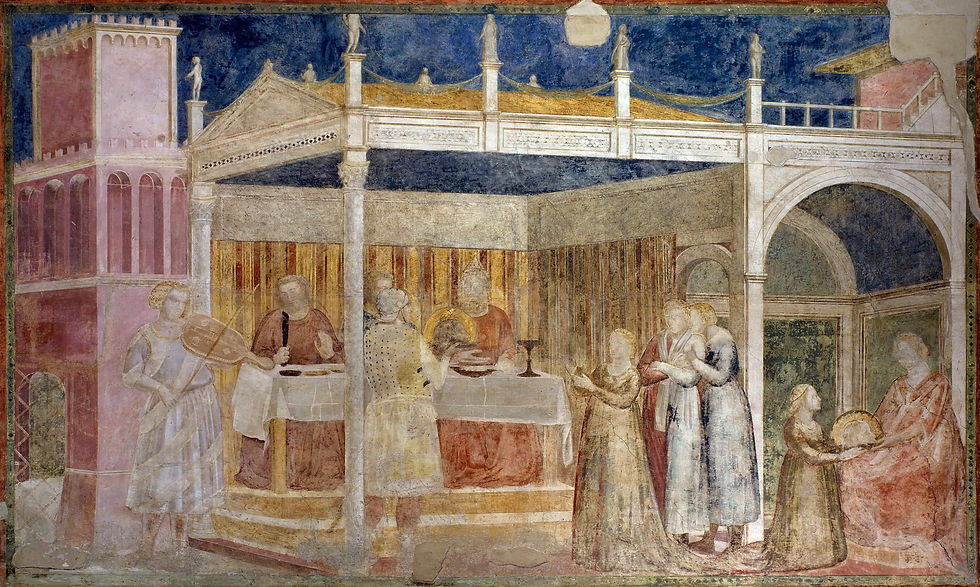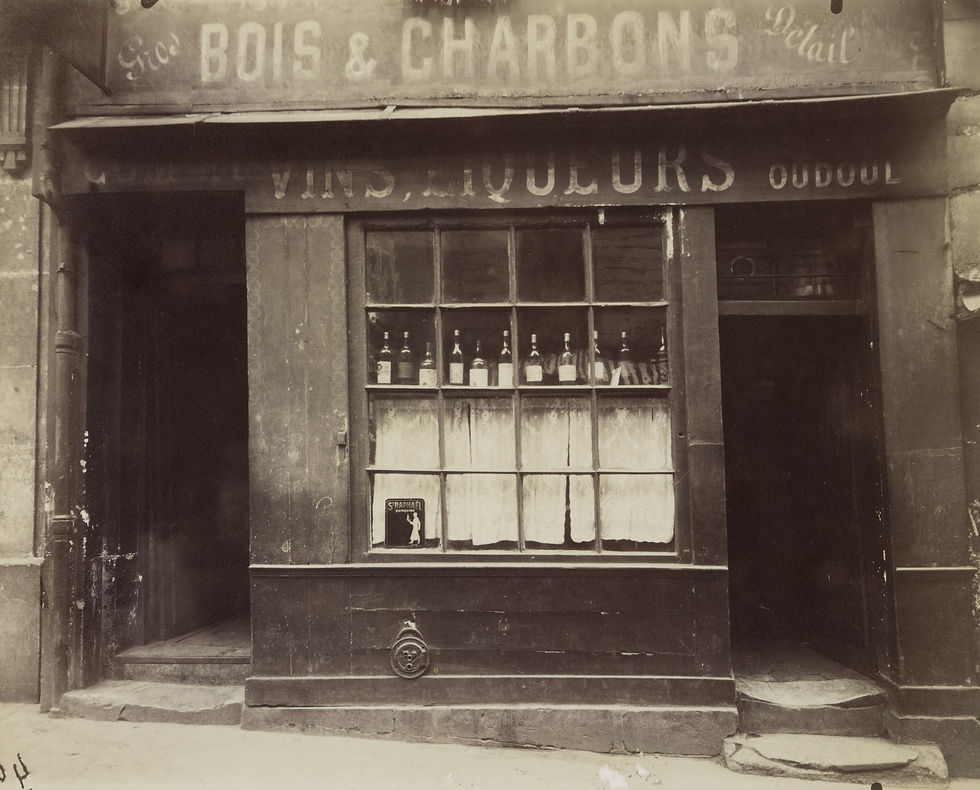Suggestion: Schubert, Piano Trio N° 2, op. 11, D. 929, Andante con moto (1827)
The ‘Muses’ companion since Antiquity, wine has been represented through many different art forms, such as literature, music and photography, as well as architecture, decorative and fine arts. Wine seems to have been a particular source of fascination for painters.

LUNCHEON OF THE BOATING PARTY
Auguste Renoir (1841-1919)
1880-1881
The Phillips Collection, Washington DC
Wine takes centre stage in this painting by Renoir. Placed at the heart of the action, wine plays an active role and contributes to the painting’s happy, serene atmosphere. The people in the painting are shown as happy to be together and enjoying the delights of friendship. Duncan Phillips describes this work as “overflowing with contagious good humour”.
Artists, especially painters, have always acted as commentators. Vine and wine have been part of our social, cultural, religious, political and economic history throughout the ages. By telling their history, these artists help us better understand our own.
>> A THEMATIC TOUR: 5 PERMANENT COLLECTIONS, 33 PAINTING GALLERIES
While painting – canvases, frescoes and illuminations – takes centre-stage, the Virtual Wine Museum also exhibits many other art forms. It’s the museum of the “Wine of the Arts”, telling great history of vine and wine from Antiquity to the present day.
Focus: a look, a work
Wine and Painting
Let us suggest the following route around the museum: Wine and the Arts to whet your appetite, the Focus: a look, a work to awaken your senses and the Gallery Collections to taste at your leisure or by following the guided tour below and at the bottom of the page. If you are pressed for time, why not take a quick trip around The Virtual Wine Museum’s selected highlights?
Wine-drinkers, Painters bear witness
Wine-drinkers have been portrayed by every kind of artist, and by great masters as well as more minor painters. One of these painters, Manet (who played a significant role in the representation of wine in art) believed that art should reflect life. Wine, when represented on canvas, is no exception to this rule.
Such images are documentary, journalistic: they tell us the role played by wine in all walks of life, without exceptions. Daily life, social life, drunkenness and savoir-boire. Wine has been used as a social marker... (video: click on the icon)
THE BROTHERS CLARKE WITH OTHER GENTLEMEN TAKING WINE
Gawen Hamilton, between 1730 and 1735 - Yale University, New Haven, CT, US

A BAR AT THE FOLIES-BERGÈRE (UN BAR AUX FOLIES-BERGÈRE) Edouard Manet, 1881/1882 - Courtauld Institute, London
A new perspective on the knowledge of wine
This site was originally developed in 2011 as part of a university project based around the creation of a virtual wine museum dedicated primarily to the medium of painting. The objective was to show how, and according to which themes, artists have treated wine and the vine. Like physical museums, virtual museums aim to promote culture and to make it accessible for everyone.
André Malraux’s ‘imaginary museum’ or ‘the museum without walls’ (as it is often translated)* is closer than ever before, thanks to new technological formats : Malraux' imaginary museum has become a virtual museum >>. The Virtual Wine Museum shares Malraux’s vision and offers a new perspective on the knowledge of wine and its history, especially social history.
The museum’s creator, Eric Beau, is a member of the UNESCO network 'Chair Culture and Traditions of Wine', Dijon. After having spent many years amidst the vines of the Côte de Beaune in Burgundy, he now lives in Bordeaux. He lectures at the University of Burgundy and in Bordeaux region.
The Virtual Wine Museum is a non-profit venture. Open to all, it aims to be an international point of reference, both a historical and educational goldmine for enthusiasts and students, and an accessible, easy-to-understand site for the general public.
It is a recognized reference site. It has been selected in 2020 by the jury of the International Organisation of Vine and Wine (OIV), who have awarded it a Special Mention in their Fine Arts category. The museum is also a member of the international network of partners of the UNESCO Chair on “Wine Culture and Traditions” at the University of Burgundy.
Georges-Henri Riviere, founder and creator of the Beaune Wine Museum and the National Museum of Folk Art and Tradition, liked to say that 'the importance of a museum cannot be measured in terms of visitor numbers, but by the number of visitors who have learned something there.' Not to mention the number of visitors who come back. For virtual museums, this is truer than ever. We hope that you enjoy your visit.
Focus: a look, a work
Could this harvest scene have really taken place?
Van Gogh painted two landscapes featuring vines in oils –The Green Vine and The Red Vine – during his period in Arles, where he lived from 20th February 1888. The Red Vine is one of the artist’s best-known paintings, and often said to be the only one sold in his lifetime – in February 1890, five months before his suicide.
He produced a harvest scene in late October, near Arles, depicting red vines. This is decidedly odd: although Arles is in a Mediterranean region, a late-October harvest is still terribly late. Usually, the grape harvest takes place before the vines turn red. There is a plethora of grape-pickers – twenty-one! Night has almost fallen. What to make of this harvest scene? Could it have really taken place as Van Gogh depicts it, so late in the year? Let’s examine the evidence in Van Gogh’s Letters to his brother Théo...
Off the beaten track exhibitions
Eugène Atget takes us on a stroll around “Vieux Paris”. Wandering from neighbourhood to neighbourhood, we’re on the hunt for wine merchants, bars, cabarets, cafés and restaurants – like this bougnat's shop (Auvergnat living in Paris), where wines and liquors jostle firewood and sacks of coal. Atget’s obstinate desire to lay reality bare makes him the grandfather of modern photography.
Still on display: the Rubaiyat of Omar Khayyam accompanies our display of Persian miniatures. Wine, frequently mentioned in Khayyam’s verses, is presented as a cure for melancholy and even the elixir of life. Two other exhibitions focus on art of today. Burgundy-based abstract painter Bertrand Sallard gives us his take on the tasks of the “vine to wine” process dictated by the seasons. Meanwhile, our Street Art exhibition shows Bacchus and wine taking over the urban landscape.

NEOLITHIC JAR RECOVERED FROM A NEOLITHIC SITE IN GEORGIA © Georgian National Museum
BLOG: Wine, Art and Museum News (Fr.)
Scientists agree that vinification was first practised in the Caucuses, since the 19th century considered the homeland of vine cultivation. Georgia has confirmed its position as the birthplace of viticulture with some new archaeological discoveries. Winegrowing originated over 8,000 years ago, almost ten decades earlier than previously thought. Before the announcement, the earliest evidence of viticulture – dating from around 5,000 BC – had been found in Iran’s Zagros mountains. Residue found in eight large ceramic containers had been identified as wine by researchers from the University of Pennsylvania, the Georgian National Museum and the University of Toronto. This discovery is the earliest evidence of winemaking by humans to date.
LAST PUBLISHED POSTS

DIONYSIAC ECTASY Roman sarcophagus, 2nd century, from Perga, ancient Greek city in Anatolia - Archaeological Museum, Antalya, Turkey
What's new at The Virtual Wine Museum?
This scene of ecstasy depicts satyrs and Maenads, Bacchus’ usual companions. Satyrs are ambivalent creatures, part-man and part-stag, who live out in the wild. They make up the “Dionesic procession” accompanying the god and are associated with the Maenads, who follow on behind. The latter are not priestesses, but play an important role in religion and worship. They participate in the mysteries and festivals held in honour of the god. Personifying the orgiastic spirits of nature, they dance frenetically, plunging themselves into mystic ecstasy. The Bacchantes (the Roman name for the Maenads) were said to behave like ferocious beasts.
RECENTLY ADDED
New works, restored works and works reproduced in better and accurate quality - 2nd Quarter, 2020

PEASANT KERMIS David Teniers the Younger ca. 1665 - Rijksmuseum, Amsterdam, The Netherlands

PORT OF ROUEN, OFF-LOADING AND LOADING, WOOD (and Wine) Camille Pissarro, 1898 - Clark Institute, Williamstown, MA, United States

TWO DRINKERS Honoré Daumier ca. 1858 - The Barnes Foundation, Philadelphia, PA, United States

STILL LIFE After Pablo Picasso, Lithographie, 1923 - Musée national Picasso, Paris

ARMENIAN AMBASSADORS OFFER WINE AND A HORSE TO THE PERSIAN EMPEROR, Relief, ca. 515 BC. - Apadana, Persepolis, Iran

FEAST OF HEROD Giotto dit Bondone, 1320 - Capella Peruzzi, Santa Croce, Florence, Italy

GRAPE HARVEST, Tapestry, Southern Netherlands, first quarter of the 16th century - National Museum of the Middle Ages, Paris

SOIR BLEU Edward Hopper, 1914 - Whitney Museum, New York City

TAPESTRY OF BAYEUX, PANEL 43: "AND HERE THE BISHOP BLESSES THE FOOD AND THE DRINK", 1066/82 - William The Conqueror Center, Bayeux, Normandy, France

THE VINEYARD AT CAGNES Auguste Renoir, ca. 1908 - The Brooklyn Museum, New York

VAUDEVILLE THEATER (ENGLISH DANCING COUPLE) Ernst Ludwig Kirchner, 1907 (1926) - Städel Museum, Frankfurt am Main, Germany

WORKERS PRUNING THE VINES Auguste Chabaud

THE SILVER GOBLET Jean-Baptiste-Siméon Chardin ca. 1728 - Saint Louis Art Museum, St. Louis, Missouri, United States

YOUTH POURING WINE IN DIONYSOS' KANTHAROS Tondo of a kylix, Greece, Attic clay, ca. 480 BC. - Musée du Louvre, Paris

BOAT SCENE ON THE RHINE NEAR BINGEN (Germany) Johann Baptist Bachta, ca. 1840 - Museum am Strom, Bingen, Germany

FRANCE-CHAMPAGNE Henri de Toulouse-Lautrec, 1891 - MoMA, New York





















